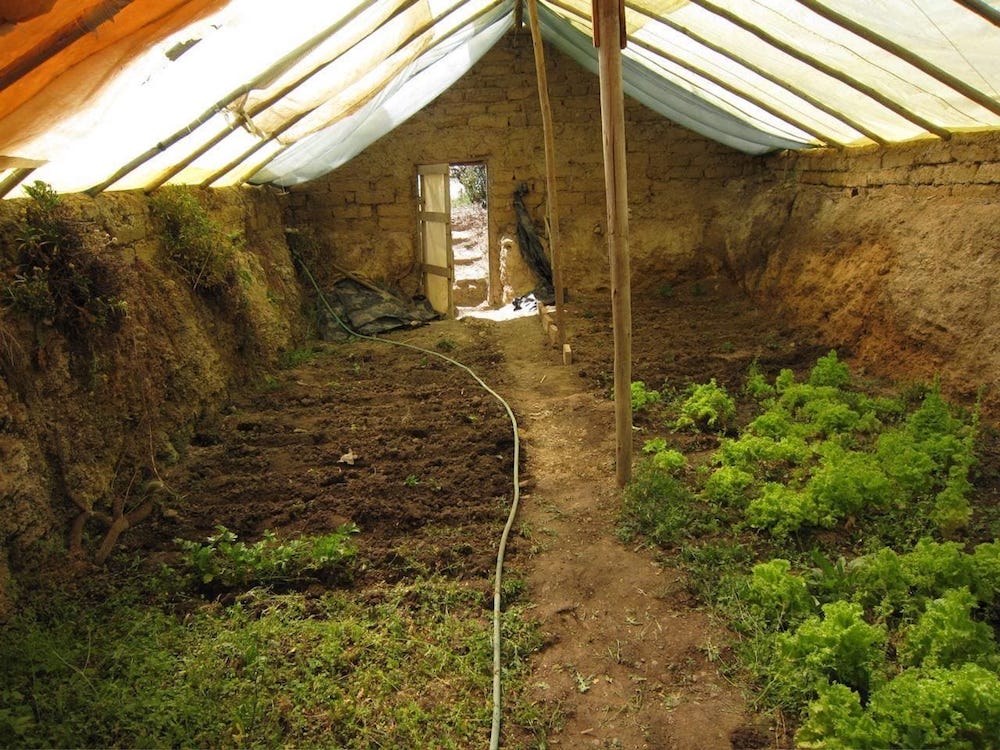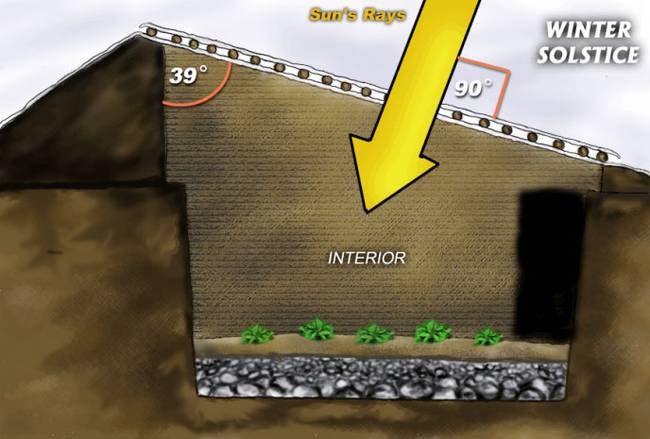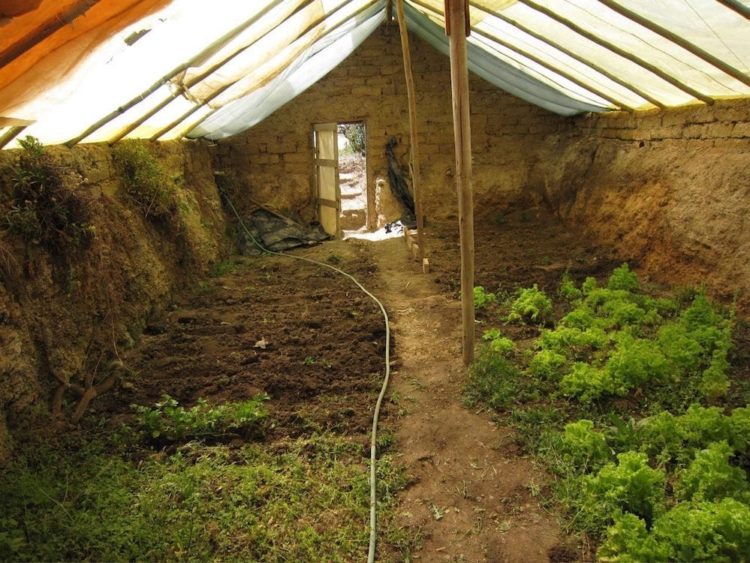
The underground greenhouses are an efficient and economical alternative so you can grow food throughout the year.
The underground greenhouse is a rectangular hole in the ground with an average depth of three meters, covered with plastic. It is built to keep the temperature constant, around 16 ° C. To achieve this, you must select a place that has sunshine throughout the year, in addition to being at least one meter deep. In this way the energy of the sun and the protective capacity of the earth are used.

Important specifications must be taken into account for its construction. For example, the doors must be tilted and oriented so that the roof is kept without collapsing. In relation to the inclination, it is recommended that you keep 39º, from north to south. Subsequently, small holes are made, some of them will serve for a later drain. By last, The structure must be strong to withstand rain and snow.
The building of the walls can be done with the same land that we get by digging the pit. The north wall must be taller than the wall facing south; It is a measure to be taken by the seasons. For example, in winter all the heat of the sun that is possible is required while in summer the sunlight will be reflected. It is then covered with plastic, in order to avoid water seepage and avoid heat losses.
The roof that seals the hole also has to be covered by two layers of plastic, one above and one under the roof. When the sun’s rays penetrate it will create a warm environment, conducive to plant growth. The underground walls help conserve moisture and heat. The width and length of the rectangular hole can be varied; The important thing is that there is enough space for each crop.
Advantages of underground greenhouses.
- The temperature remains constant and high during winters.
- During the summers the temperature stays cool and the humidity is much higher.
- You can grow all year long.
- The construction cost is low and the production is high.
If you were interested in this type of greenhouse, here are some complete instructions: fao.org


